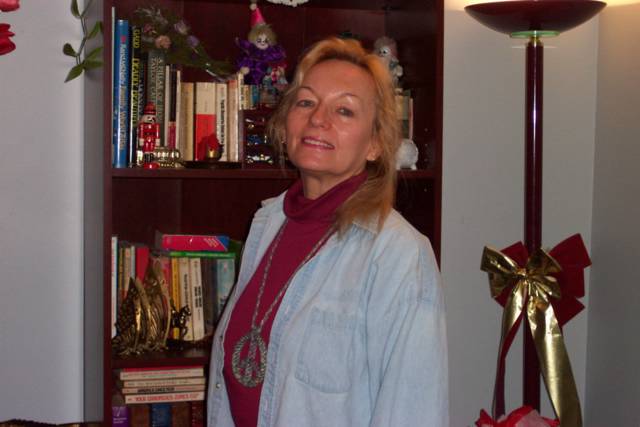Tomgram: Rebecca Solnit on Wal-Mart Art
As many of you read this, I'll be on a plane from San Diego back to New York City, flying over more Wal-Marts than I care to imagine. If you were to line up the approximately 3,700 giant, windowless Wal-Marts in the United States, you would undoubtedly have one of those Believe-It-Or-Not facts. The resulting giant Wal might be the only human-made structure visible from the moon -- it's an urban legend that you can see the Great Wall of China from there -- or maybe even from Mars. Add in the 1,500 Wal-Marts overseas, including the almost 700 in Mexico (even the Aztecs would be envious), and probably no alien civilization in the Milky Way could miss them.Rebecca Solnit must have been flying over the country too, because she noticed that Wal-Mart money, generated in part by paving Mexico, was now heading out of those cubes and into the rarified atmosphere of the finest of arts. What does it mean, she wonders, when the heiress to a fortune earned savaging local cultures and one-of-a-kind arts and crafts purchases a one-of-a-kind object for the one-of-a-kind museum of American art she is building in Bentonville, Arkansas? Her exploration of Wal-Mart art, in her usual striking style, is worth the price of admission -- even if, at Tomdispatch, that price is free.
Solnit's Hope in the Dark, the first Tomdispatch-generated book, has just come out in a new, updated -- partially thanks to a couple of her more recent Tomdispatches -- edition. In its explanation of how history works (like a crab scuttling sideways), it remains a beacon for all of us in our moment of murk. If you despair, rush to your nearest independent bookstore and pick up a copy, then consider what a Wal-Mart biennale might really be like. Tom
The Wal-Mart Biennale
By Rebecca Solnit
It isn't that, when Wal-Mart heiress Alice Walton purchased Asher B. Durand's 1849 painting Kindred Spirits last year, she got the state of Arkansas to pass legislation specifically to save her taxes -- in this case, about $3 million on a purchase price of $35 million. It isn't that the world's second richest woman and ninth richest person (according to a Forbes magazine 2005 estimate) scooped the painting out from under the National Gallery and the Metropolitan Museum of Art, which had banded together to try to keep it in a public collection when the New York Public Library decided to sell it off. It isn't that Walton will eventually stick this talisman of New England cultural life and a lot of other old American paintings in the Crystal Bridges Museum of American Art, the Walton family museum she's building in Bentonville, Arkansas, the site of Wal-Mart's corporate headquarters -- after all people in the middle of the country should get to see some good art too. It might not even be, as Wal-MartWatch.com points out, that the price of the painting equals what the state of Arkansas spends every two years providing for Wal-Mart's 3,971 employees on public assistance; or that the average Wal-Mart cashier makes $7.92 an hour and, since Wal Mart likes to keep people on less than full-time schedules, works only 29 hours a week for an annual income of $11,948--so a Wal-Mart cashier would have to work a little under 3,000 years to earn the price of the painting without taking any salary out for food, housing, or other expenses (and a few hundred more years to pay the taxes, if the state legislature didn't exempt our semi-immortal worker).
The trouble lies in what the painting means and what Alice Walton and her $18 billion mean. Art patronage has always been a kind of money-laundering, a pretty public face for fortunes made in uglier ways. The superb Rockefeller folk art collections in several American museums don't include paintings of the 1914 Ludlow Massacre of miners in Colorado, carried out by Rockefeller goons, and the J. Paul Getty Museum in Los Angeles doesn't say a thing about oil. But something about Wal-Mart and Kindred Spirits is more peculiar than all the robber barons and their chapels, galleries, and collections ever were, perhaps because, more than most works of art, Durand's painting is a touchstone for a set of American ideals that Wal-Mart has been savaging.
It may be true that, in an era when oil companies regularly take out advertisements proclaiming their commitment to environmentalism, halting global warming, promoting petroleum alternatives, and conservation measures, while many of them also fund arguments against climate change's very existence, nothing is too contrary to embrace. But Kindred Spirits is older, more idealistic, and more openly at odds with this age than most hostages to multinational image-making.
Click here to read more of this dispatch.






2 comment(s):
This is very interesting site...
Videos clips pornstars Allegra+email+strada Asian femdom cartoons Transexuals orgasm Your southern belle ass Brandy and mr whiskers hentai How to treat eczema Lesbian sapphic erotica Large titted women sucking large cocks
By Anonymous, at
1:43 PM
Anonymous, at
1:43 PM
You have an outstanding good and well structured site. I enjoyed browsing through it »
By Anonymous, at
3:03 PM
Anonymous, at
3:03 PM
Post a comment
<< Home